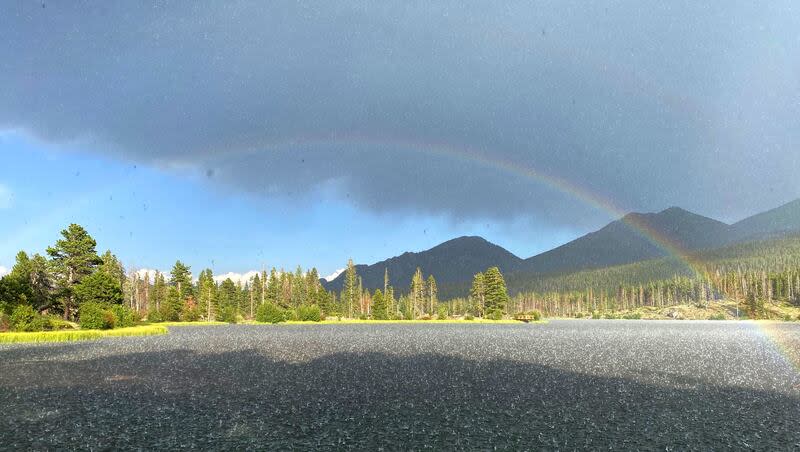These are the best U.S. national parks to visit for National Park Week

This week, until April 28, marks National Park Week! Throughout this period, parks, programs and various partners will host events and activities for you, family and friends to enjoy.
Whether you’re seeking the challenge of a hike, the tranquility of a scenic drive or the thrill of wildlife watching, national parks provide endless opportunities for adventure and discovery. Moreover, many parks offer accessible trails, facilities and programs designed to accommodate all ages, individuals with disabilities and pets.
Rocky Mountain National Park
Rocky Mountain National Park is a breathtaking landscape found in Colorado, perfect for outdoor lovers. With towering mountainous peaks, thick forests and stunning lakes, it is a great spot for hiking, wildlife viewing and photography.
Wildlife: Elk, moose, bighorn sheep, mule deer, black bears and birds.
Personal tip: Go on the trail ridge road, which will lead you to the highest point in the national park and give you the chance to see elk from only a few feet away. For a once in a lifetime opportunity, I recommend biking, but most visitors drive up.
Haleakalā National Park
Haleakalā National Park, located on the island of Maui in Hawaii, is a place with cultural significance. The park is home to the world’s largest dormant volcano, rainforests, bamboo forests and pools.
Wildlife: Nēnē (Hawaiian goose), mongoose and ‘Ua’u (Hawaiian petrel).
Personal tip: Wake up early to make it to the sunrise. While it is possible to view the sunset on the top of the volcano, the sunrise is more spectacular, it is less crowded and you can participate in the traditional Hawaiian E Ala E chant.
Zion National Park
Zion National Park’s red rocks, found in southwestern Utah, were carved by the Virgin River. Here, visitors can explore scenic trails, hike through the Virgin River, see waterfalls and visit ancient rock art.
Wildlife: Mule deer, bats, bighorn sheep and rock squirrels.
Personal tip: Getting a permit to hike Angels Landing is worth it. The thrilling hike takes you across steep portions of the mountain, holding onto chains to safely navigate the landscape. Besides feeling accomplished, being able to view the whole park from the summit is incredible.
Yellowstone National Park
Yellowstone National Park is located primarily in Wyoming but extends into Montana and Idaho. The park is most known for its geysers, including Old Faithful, which erupts regularly, and wildlife.
Wildlife: Bison, moose, bears, wolves and elk.
Personal tip: Visit Yellowstone in the early spring, around April. At this time, you will be able to see all of the newborn bison with their beautiful red coats. Furthermore, in early spring, it can still snow! When snow lands on a bison’s coat, it does not melt. It is incredible to see.
Glacier National Park
Glacier National Park, located in Montana along the Canadian border, is a wilderness of mountains, ancient glaciers and lakes. Glacier has over 700 miles of trails and gives individuals the opportunity to do a wide range of activities such as whitewater rafting or horseback riding, besides hiking.
Wildlife: Bears, moose, bats, bighorn sheep, elk, mountain goats, mountain lions and pikas.
Personal tip: Plan a trip to Glacier with friends or family and spend the entire week! Biking Going-to-the-Sun Road, boating, fishing, hiking and stargazing are all available at this park, many of which activities are fun for all ages.

